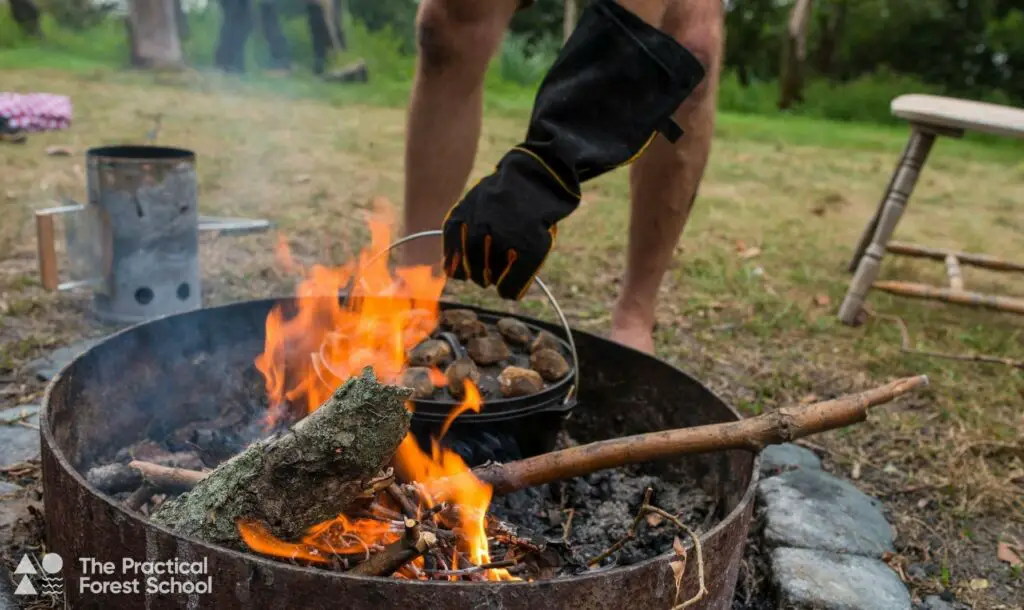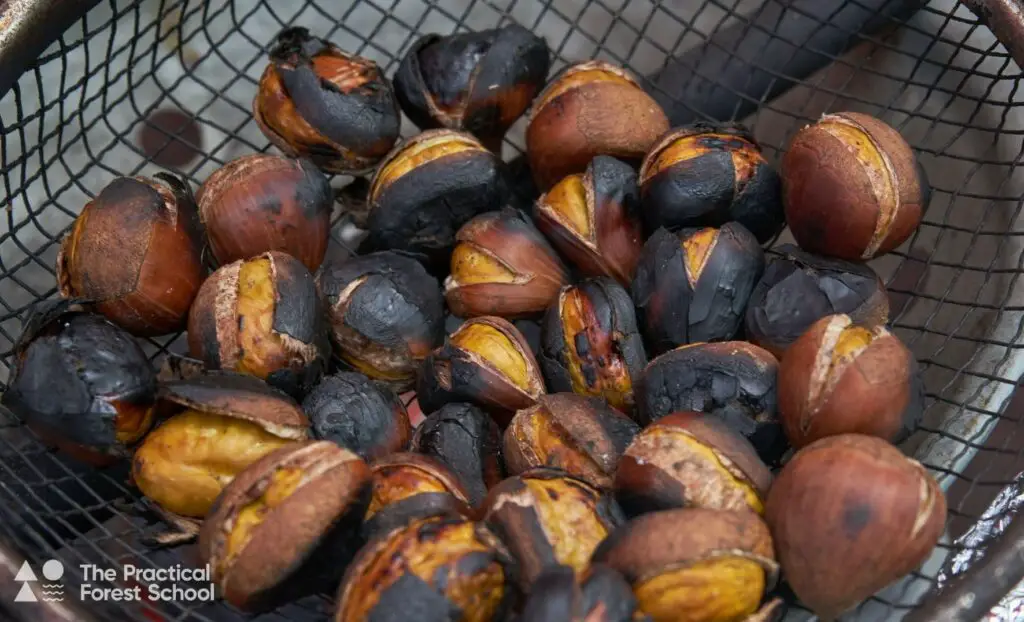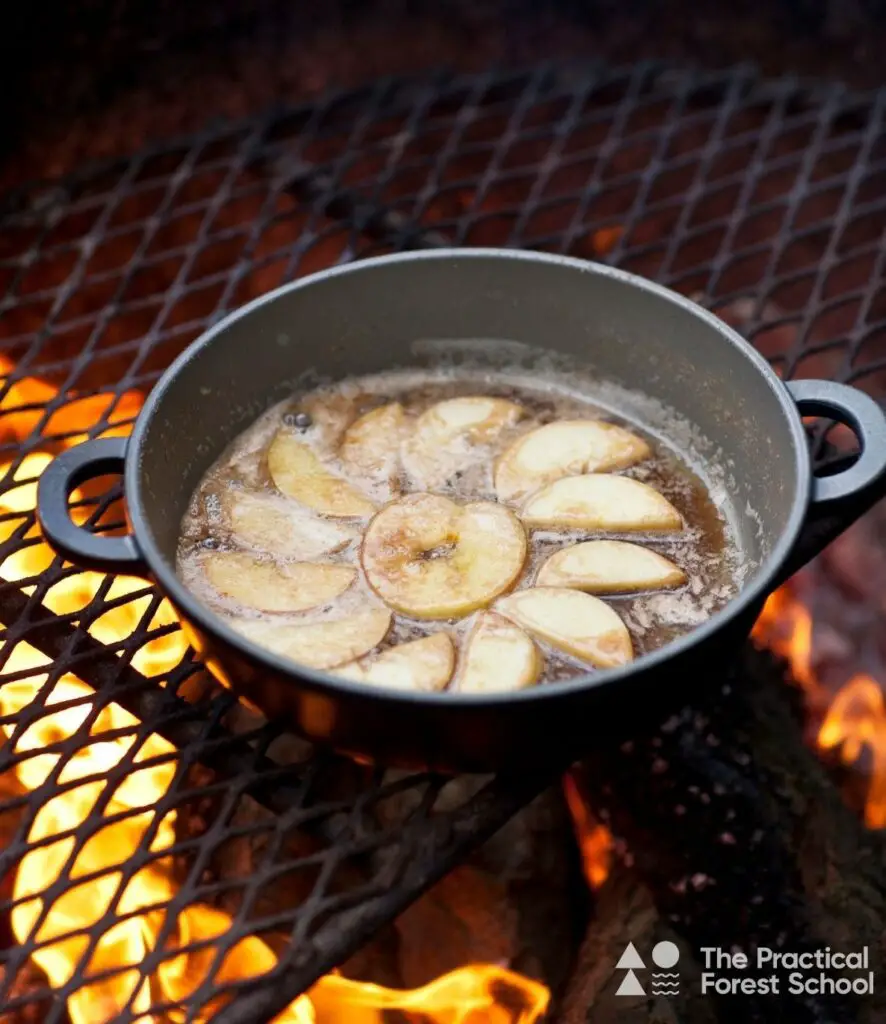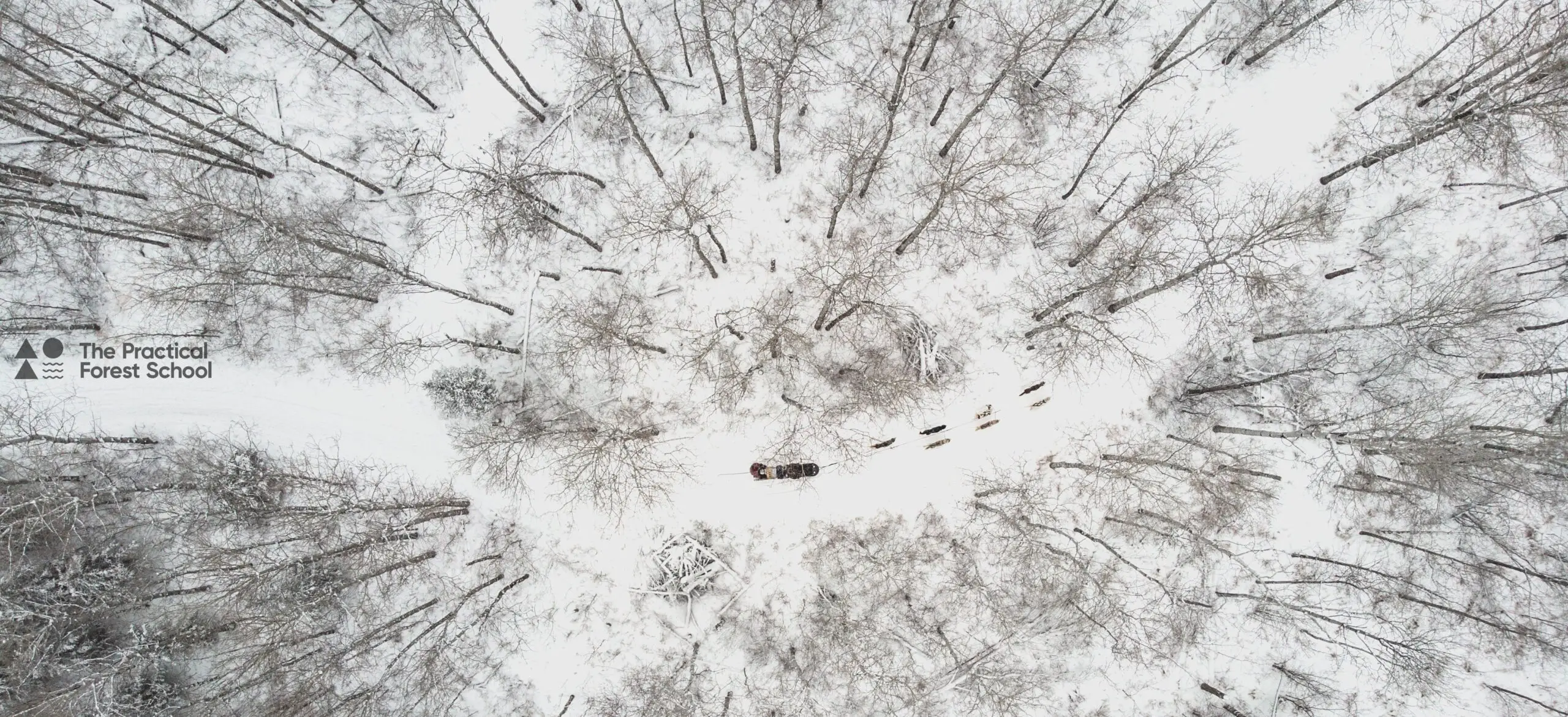11 Forest School Recipes for Winter
This blog is reader-supported. When you purchase something through an affiliate link on this site, we may earn some coffee money. Thanks! Learn more.
This article contains affiliate links at no cost to you.
The nights are drawing in, and we’re huddling around the fire circle in the dark these days. It’s cold and what would be better than a snack cooked on the fire?
Our forest school sessions are around two hours long so that’s plenty of time to get something brewing over the fire or to finish a quick bake. But not really enough time for a jacket potato. When the kids are excited to learn a new technique and are keen to practise their skills, what can you cook? Here are our suggestions for winter forest school recipes to cook around the campfire.
Drinks
Hot drinks are always welcome when the weather is cold. While enamel mugs look nice in photos, we’ve found they don’t really work for young children and return to these plastic ones which are hardwearing and easy to clean.
Try mulled apple juice warmed in the dutch oven. In fact, any fruit juice heated with slices of apples and oranges makes a great warming forest school drink on a cold day. Pop a cinnamon stick or some cloves in the mix for extra seasonal flavours – just make sure to take them out before serving!

You can’t go wrong with hot chocolate sprinkled with tiny marshmallows. We use these vegan marshmallows so everyone can join in.
Savoury snacks
Here are our favourite savoury campfire snacks for wintery forest school sessions – you can adapt these to make them suitable for the age groups you work with and the equipment you have.
Eggy bread
Comfort food works really well for small children and they can help make eggy bread themselves. Mix up eggs and a splash of milk, dip in your bread and then lay the slices on a greased baking tray or fry them (if you have a serious fire circle set up). Small kids can beat the eggs themselves.
Any milk works for this, even slightly sweet ones like Alpro Growing Up Milk, which is what we often have in the fridge.
Wraps
Wraps are a good, quick choice for campfire food. Fill them with brie and cranberry sauce for seasonal flavours and then heat them until the cheese is just melting. Cranberry sauce (or any type of jam) can be very hot when it comes off the fire so make sure the food isn’t going to burn anyone’s mouth before it’s eaten.
Roasted chestnuts
If you enjoy hearing the sounds of popping chestnuts, then that’s a simple snack to recreate on the campfire. Make sure you’re using edible chestnuts, not random ones the kids have picked up off the floor as part of a scavenger hunt – check your trees!

Cheat’s tip: You can buy bags of chestnuts for roasting in the supermarket. Not quite as authentic as foraging for your own, but you’ll guarantee they’re good for roasting and that they’ll taste OK!
Noodle cups
This is a great snack idea for when you don’t have a big fire set up. Let’s say you’ve only got a Kelly kettle and hot water is all you can do in your outdoor classroom. That’s still fine: make your own quick noodles.
Use any brand of quick or instant noodles, break them up, put them in a mug or pan and cover with boiling water. Follow the instructions on the pack – which is usually leave them for 5 minutes or until they look edible. The boys at our forest school afterschool club seem to particularly like noodles – I just wish this recipe didn’t make quite so much washing up!
Make them a bit healthier by stirring in a spoon of tinned sweetcorn or peas. Season with soy sauce or tomato sauce, because kids seem to put ketchup on everything!
Sweet snacks
There are some great options for sweet snacks too. I’d suggest sticking to one snack per session so you don’t get overwhelmed with washing up or have to deal with too many competing requests for more!
Baked apples
Baked apples in the fire are always good, and if you don’t have enough time to wait until they are super soft then it’s fine to eat them warm but crunchy! Stuff apples with mincemeat or half a Mars bar, wrap them in foil and then bake them until they are done to your liking or you get bored waiting!
Top tip: Use two old roasting tins as a makeshift oven. Put the food to be baked in one, then use the other as a lid and put them in the ashes. This saves on aluminium foil, the manufacture of which is not good for the environment. We do use it, but we’re learning more about the environmental impact and trying to cut down.
Apple slices
It’s the season for apples, so let’s make the most of them! Toasted apple slices are a great alternative to baked apples if you don’t have a lot of time. When you’ve finished your outdoor exploration for the time being, gather everyone round to prepare apple slices as their snack.
Use an apple cutter (like this one) to cut the apple into sections and core it. Dip each segment into cinnamon sugar (caster sugar mixed with a generous sprinkling of cinnamon). Then put the segment on to a skewer and toast it until the sugar is slightly melted and caramelised.

The apple will still be hard but it will be tasty.
As an alternative, toast apple segments on a skewer, uncoated until they start to soften, then dip in brown sugar and cinnamon. Toast again until the sugar starts to melt.
Chocolate orange cakes
If you have a bit more time, try orange skins filled with chocolate cake mix. We’ve done this before carving the orange to make it look like a Hallowe’en pumpkin – but I confess that they were cooked in the microwave! Chocolate cake mix (from a box or use a microwave mug cake recipe) makes the oranges impressive to look at and fun to eat.
Mincemeat damper bread
Bring the seasonal flavours to damper bread! Make your standard damper bread recipe and mix in a spoon of mincemeat from a jar. If you are worried about the bread not cooking through properly, get a suet free mincemeat so it’s OK to eat without being fully cooked.
If the children attending your session don’t have the patience for bread on a stick cooked over the fire, then cook the damper bread in the dutch oven and let them do something else while they wait for it to be done.
If you have parents attending the session, mix up some butter, icing sugar and a small slug of brandy to make some brandy butter to spread on the bread!
We’ve got detailed instructions on making damper bread if you haven’t done it before.
Porridge
Personally, I think porridge at an afterschool club would be a bit weird and I can’t see any of the children who attend my sessions going for it. But if you are running parent and toddler groups in the morning, or holiday clubs that start early, porridge is a filling and warm start to the day.
Use quick oats that mix with water and heat them on the fire in a pan like you’d do at home. The ‘mix with boiling water’ mug porridge sachets (we tried these ones) are OK but I don’t think they taste as good as ‘real’ oats. Also, I can’t help but think they are more wasteful, being served in individual sachets.
Our recipe is half a cup of oats and one cup of water per adult, and scale it down depending on the hungriness and size of the child. For example, for 8-year olds, half a drinking tumbler is a good size for the oats measure, and then fill up the tumbler with water for the liquid measure. Mix water and milk as your liquid if you prefer a richer taste, but honestly, plain water is just fine.
Any forest school cooking needs to be subject to a risk assessment, so make sure you’ve considered what needs to happen to carry out the activity safely. What will you be making round the camp fire this winter?

About the author: Jon Borley
Jon qualified as a Level 3 Forest School Leader with the Sussex Wildlife Trust. He works independently as a practitioner running forest school clubs and also within schools both in a forest school capacity and as an outdoor learning teaching assistant, working with preschoolers to secondary-aged children. He has previously led sessions for adults as part of professional development events for the Sussex FSA, and is a member of MIAS.
